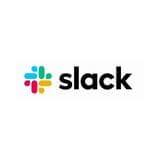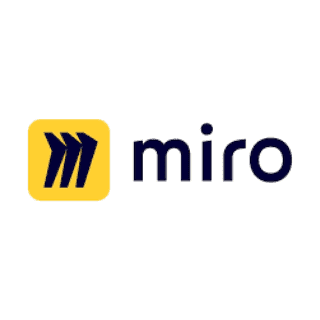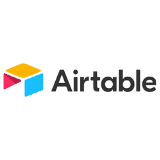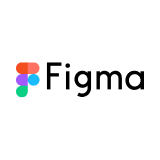- Free Version: Available for teams of up to 10
- Pricing: Premium plan $24/month (with a free 30-day trial period)
- Platforms supported: Available on mobile app (iOS and Android) or a web-based software
Why use SafetyCulture?
SafetyCulture promotes better collaboration by connecting teams across different locations in a single digital workspace—all using their mobile devices. Customers like Gason have significantly improved their internal communications using a system that allows them to view who has seen and acknowledged announcements. Additionally, you can use it along with other platforms your team is already used to, ensuring workflow efficiency at all levels.
Features:
- Keep everyone on the same page with project and task details by sending out media–rich announcements through Heads Up
- Coordinate, manage, and complete critical tasks and milestones as a team from the platform’s built-in actions dashboard
- Keep track of all correspondences among team members involved in each task from the platform’s native chat feature
- Seamlessly integrate data from the SafetyCulture platform into the other business tools that the team uses
- Ensure everyone has access to a singular source of information for all teams across various locations
Why use Slack?
Slack is a popular communication tool that allows team members to work with each other easily, keeping the entire team on the same page. It facilitates seamless team collaboration through channels, direct messages, and integrations, making it an essential tool for businesses aiming to enhance communication and productivity.
Features:
- Real-time messaging and file sharing
- Customizable channels for organized communication
- Integration with third-party apps and services
- Free Version: Yes
- Pricing: Starts at $7.25/user/month, billed annually
- Platforms supported: Web, Desktop, iOS, Android
Why use Podio?
Podio is a great project management tool that encourages teams to accomplish tasks in a collaborative space. It enables teams to collaborate on projects, manage tasks, and organize workflows in a way that aligns with their unique requirements, making it an ideal choice for businesses with diverse collaboration needs.
Features:
- Task assignment and progress tracking
- Integrated chat for real-time communication
- File sharing and document collaboration
- Free Version: Yes, available for the first 5 users.
- Pricing: Starts at $11.20/month, billed annually
- Platforms supported: Web, Desktop, iOS, Android
Why use Miro?
Miro is known for being a great visual collaboration software that makes it easy for employees and team members to collaborate. Teams can ideate, plan, and collaborate in real-time, making it an excellent choice for creative projects and brainstorming sessions where visual representation is crucial.
Features:
- Digital whiteboards for collaborative brainstorming
- Templates for various project management and planning needs
- Real-time collaboration with distributed teams
- Free Version: Yes
- Pricing: Starts at $8/member/month, billed annually
- Platforms supported: Web, Desktop, iOS, Android
Why use Basecamp?
Basecamp serves as the hub for your team when working on different projects. It provides a centralized platform for task management, document sharing, and team communication, making it an ideal choice for teams looking for a straightforward and user-friendly collaboration solution.
Features:
- To-do lists and task management
- Message boards for team communication
- File sharing and document storage
- Free Version: Not available
- Pricing: Starts at $15/user/month (with a free 30-day trial period)
- Platforms supported: Web, Desktop, iOS, Android
Why use Airtable?
Airtable is a simple and efficient project management tool that makes it easy for team members to communicate, work on tasks together, and create a culture of collaboration. Teams can use Airtable to organize, collaborate, and manage projects in a visually appealing and customizable manner, making it suitable for creative projects and data-centric tasks.
Features:
- Flexible and customizable data tables
- Collaborative database with real-time updates
- Task management and project tracking
- Free Version: Yes
- Pricing: Starts at $20/seat/month, billed annually
- Platforms supported: Web, Desktop, iOS, Android
Why use Figma?
Figma is a visual collaboration platform with a unique interface, making it fun to collaborate with teams. It fosters collaboration by allowing designers, developers, and stakeholders to work together on the same design file, making it an essential choice for design teams looking for a seamless and collaborative design process.
Features:
- Real-time collaboration on design files
- Cloud-based design storage and version control
- Prototyping and interactive design features
- Free Version: Yes
- Pricing: Starts at $12/seat/month, billed annually
- Platforms supported: Web, Desktop, iOS, Android
What is Collaboration Software?
Collaboration software is a digital solution that facilitates and enhances communication, cooperation, and coordination among individuals or teams. It serves as a centralized platform where users can work together seamlessly regardless of geographical barriers, promoting efficient collaboration. These platforms typically have tools for communication, task management, project management, and even training for new employees.
Benefits
There are various benefits to adopting collaboration software that vary from organization to organization. Here are some of the different reasons why you may want to use one of these platforms for collaboration in your organization:
Efficient Communication
Digital collaboration software enhances communication by providing real-time messaging, file sharing, and project updates in one centralized platform, streamlining information exchange and reducing delays.
Increased Productivity
By fostering seamless collaboration, digital collaboration software enables teams to work concurrently on projects, share resources effortlessly, and access relevant information swiftly, ultimately boosting overall productivity and output.
Stronger Teamwork Across Geographic Borders
Digital collaboration software allows teams to coordinate tasks and work on projects seamlessly, anytime and anywhere. This platform often includes tools for facilitating real-time communication, task management, and project coordination among members working in different regions.
Up-to-Date Change Tracking
Digital collaboration software ensures everyone can keep an eye on any changes made in their files through document version controls. By automatically tracking changes, users can review, edit, and manage the latest versions of files in a collaborative space, preventing confusion, and maintaining the integrity of shared documents.
Key Features
While it’s best to choose collaboration software based on the organization’s needs and goals, there are a few key features that you must have in your collaboration tools. These features include the following:
- Real-Time Messaging: Enable instant communication through chat functionalities, promoting quick exchanges and reducing reliance on lengthy email threads.
- File Sharing and Storage: A robust collaboration tool should support seamless sharing and storage of documents, images, and other relevant files.
- Task and Project Management: Comprehensive tools for creating, assigning, and tracking tasks and projects, ensuring teams stay organized and focused.
- Video Conferencing: In the era of remote work, video conferencing capabilities are crucial for face-to-face meetings, fostering a sense of connection among team members.
- Integration with Other Tools: Choose collaboration software that integrates smoothly with other essential tools, such as project management platforms, calendars, and document editing software.
- Security Features: Prioritize the security of your collaborative efforts with encryption, access controls, and secure authentication mechanisms.
Choosing the Right Collaboration Software
Here’s a quick summary of the collaboration platform options above to help you determine the best fit for your company:
| Collaboration Software | Free Version | Paid Plan | Mobile App |
| SafetyCulture | Yes | $24/user/month* | Yes |
| Slack | Yes | $7.25/user/month* | Yes |
| Podio | Yes | $11.20/month* | Yes |
| Miro | Yes | $8/user/month* | Yes |
| Basecamp | None | $15/user/month | Yes |
| Airtable | Yes | $20/seat/month* | Yes |
| Figma | Yes | $12/seat/month* | Yes |
* billed annually







